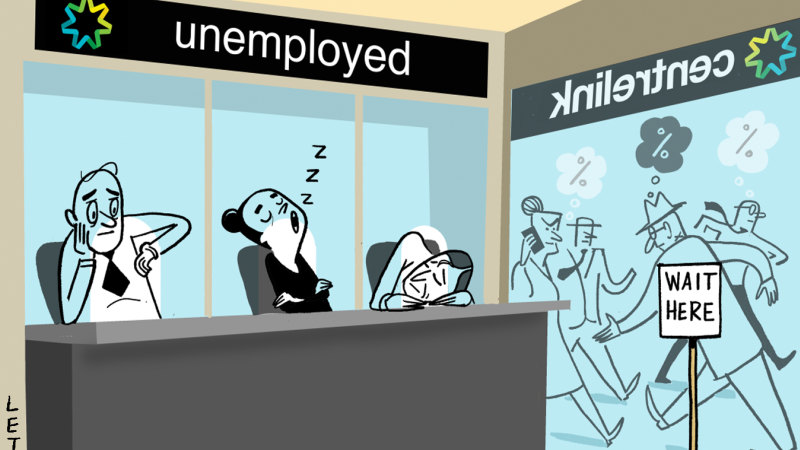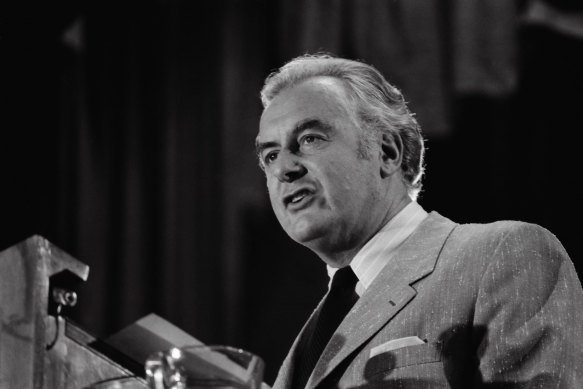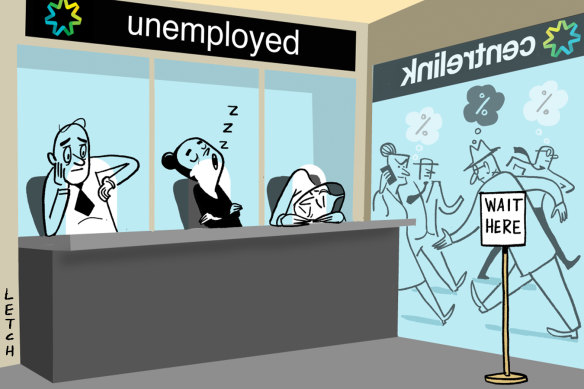Don’t miss the good news among the bad. We’ve got more jobs than ever
Here is the news: not everything in the economy is going to hell. Right now, jobs, jobs, jobs are going great, great, great. The news media (and yours truly) focus on whatever’s going wrong – the cost of living, interest rates, to take two minor examples – because they know that’s what interests their paying customers most.
Gough Whitlam was prime minister the last time the Australian labour market was this strong.Credit:Rick Stevens
This bias in our thinking exists because humans have evolved to be continually on the lookout for threats. Those threats used to be wild animals, poisonous berries and the rival tribe over the river, but these days they come more in the form of politicians who aren’t doing their job and business people on the make.
If you’re not careful, however, the preoccupation with bad news can leave you with a jaundiced view of the total picture. Everything’s bad and nothing’s good.
But it’s rare for anything to be all bad or all good. And, particularly where the economy’s concerned, it’s common for good things and bad things to go together. For instance, when unemployment is high, inflation is usually low. And when inflation is high, unemployment’s usually low. (In the rare case when they’re both high at the same time – “stagflation” – you know we’re really in trouble.)
So, when our present Public Enemy No. 1 – Reserve Bank governor Dr Philip Lowe – began a speech last week by making this point, I realised I should make sure that you, gentle reader, hadn’t missed the rose among all the thorns.
Lowe said the high inflation we’re experiencing was “one of the legacies of the pandemic and of Russia’s invasion of Ukraine”. But “another remarkable, but less remarked upon, legacy of the pandemic is the significant improvement in Australia’s labour market”.
“Significant improvement” is putting it mildly. Have you heard of “full employment”, where everyone who wants a job has one? It’s the way our economy used to be for about three decades following World War II.
But you have to be as ancient as me to remember what it was like. One reason I quit my job and embarked on a course that eventually led me to this august organ was the knowledge that, should I need to get a job, all I had to do was wait until next Saturday’s classified job ads and pick the one I wanted.
Illustration by Simon LetchCredit:
That’s full employment. And the world hasn’t been like that since Gough Whitlam was prime minister. Until now. We have more people with jobs than ever in our history.
At about 3.5 per cent, the rate of unemployment is lower than at any time since 1974. And before any of the imagined experts let fly on Twitter, this is not because any government, Labor or Liberal, has fiddled the figures.
What’s true is that, in recent decades, more people have been under-employed – they haven’t been able to get as many hours of work as they’ve needed.
But as Lowe says, in recent times, people have found it easier to obtain more hours of work. So the rate of underemployment is at multi-decade lows, and the proportion of jobs that are full-time is higher than it’s been in ages.
The youth unemployment rate is the lowest that it has been in many decades.Credit:Marco Del Grande
We now have 64 per cent of people of working age actually in a job, the highest ever. The proportion of people either already in a job or actively seeking one – the “participation rate” – is also at its highest.
A lot of this is explained by the record high in women’s participation in the labour force.
Lowe says the rate of participation by young people is “the highest it has been in a long time” and the youth unemployment rate is “the lowest that it has been in many decades”.
If all that’s not worth celebrating, I don’t know what is.
But for all those desperate to find a negative – often for reasons of partisanship – it’s not that you can’t believe the figures. It’s this: can you believe they’ll continue?
With the Reserve raising interest rates so fast and far to slow the economy’s growth and reduce inflation pressure, it’s clear that this is as good as it gets in the present episode.
For the past couple of months, we’ve seen the figures edging back a fraction from their best, and on Thursday we’ll see if that’s yet become a trend.
At present, Lowe is at the controls bringing the economic plane down to land. He’s aiming for a soft landing, but may miscalculate and give us a bumpy landing which, to mangle the metaphor, will send unemployment shooting up. If so, we may have had just a fleeting glimpse of full-employment nirvana before it disappeared into the mist.
But for the more optimistically inclined, even if the landing is harder than planned, we’ll have started from a much lower unemployment rate than in past recessions, meaning it won’t go as high as it has before, and it should be easier to get back to the low levels we’d now like to become accustomed to.
Ross Gittins unpacks the economy in an exclusive subscriber-only newsletter every Tuesday evening. Sign up to receive it here.
Most Viewed in Business
From our partners
Source: Read Full Article




